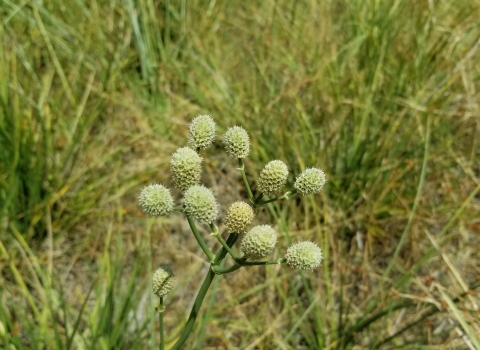Press Release
Secretary Kempthorne Announces New Policies to Improve Management of National Wildlife Refuges
(WASHINGTON) -- Secretary of the Interior Dirk Kempthorne today announced new policies that define the unique wildlife conservation mission of the National Wildlife Refuge System and will help refuge managers enhance opportunities for people to participate in fishing, hunting, bird watching, and other wildlife-related recreational activities.
"In an age when the technology and increasing urbanization are causing many Americans to lose touch with the great outdoors, these policies will ensure national wildlife refuges continue to be places where people can come face to face with nature," Kempthorne said. "They will help us to meet our responsibilities to conserve our nations diverse ecosystems, preserve our outdoor traditions, and foster a culture of environmental stewardship in future generations."
Kempthorne announced the three policies in a televised broadcast during the annual meeting of the Outdoor Writers Association of America. The new policies implement the National Wildlife Refuge System Improvement Act of 1997 and have been previously issued in draft for public comment.
Developed in close coordination with state fish and wildlife agencies, the new policies encourage refuge managers to provide additional recreational opportunities while, at the same time, establish clear guidelines to ensure recreational programs are compatible with the conservation mission of each refuge.
The first policy defines the official mission, goals and purposes of the National Wildlife Refuge System to ensure consistency among 545 refuges that together form the worlds largest system of lands dedicated to wildlife conservation. Under the policy, the mission of the Services refuge program is "to administer a national network of lands and waters for the conservation, management and where appropriate, restoration of fish, wildlife and plant resources and their habitats within the United States for the benefit of present and future generations of Americans."
The second policy provides refuge managers with guidance on how to plan visitor services that allow for enhanced opportunities for wildlife-dependent recreation including fishing, hunting, wildlife watching, photography, environmental education, and interpretation. In particular, the policy encourages refuge managers to work hand-in-hand with state wildlife agencies to provide more such recreational opportunities on refuges.
The third policy provides refuge managers consistent guidelines to administer and structure structure
Something temporarily or permanently constructed, built, or placed; and constructed of natural or manufactured parts including, but not limited to, a building, shed, cabin, porch, bridge, walkway, stair steps, sign, landing, platform, dock, rack, fence, telecommunication device, antennae, fish cleaning table, satellite dish/mount, or well head.
Learn more about structure recreational activities.The policy provides a framework to determine if activities that are not wildlife-dependent may be appropriate for a particular refuge.
"In an age when the technology and increasing urbanization are causing many Americans to lose touch with the great outdoors, these policies will ensure national wildlife refuges continue to be places where people can come face to face with nature," Kempthorne said. "They will help us to meet our responsibilities to conserve our nations diverse ecosystems, preserve our outdoor traditions, and foster a culture of environmental stewardship in future generations."
Kempthorne announced the three policies in a televised broadcast during the annual meeting of the Outdoor Writers Association of America. The new policies implement the National Wildlife Refuge System Improvement Act of 1997 and have been previously issued in draft for public comment.
Developed in close coordination with state fish and wildlife agencies, the new policies encourage refuge managers to provide additional recreational opportunities while, at the same time, establish clear guidelines to ensure recreational programs are compatible with the conservation mission of each refuge.
The first policy defines the official mission, goals and purposes of the National Wildlife Refuge System to ensure consistency among 545 refuges that together form the worlds largest system of lands dedicated to wildlife conservation. Under the policy, the mission of the Services refuge program is "to administer a national network of lands and waters for the conservation, management and where appropriate, restoration of fish, wildlife and plant resources and their habitats within the United States for the benefit of present and future generations of Americans."
The second policy provides refuge managers with guidance on how to plan visitor services that allow for enhanced opportunities for wildlife-dependent recreation including fishing, hunting, wildlife watching, photography, environmental education, and interpretation. In particular, the policy encourages refuge managers to work hand-in-hand with state wildlife agencies to provide more such recreational opportunities on refuges.
The third policy provides refuge managers consistent guidelines to administer and structure structure
Something temporarily or permanently constructed, built, or placed; and constructed of natural or manufactured parts including, but not limited to, a building, shed, cabin, porch, bridge, walkway, stair steps, sign, landing, platform, dock, rack, fence, telecommunication device, antennae, fish cleaning table, satellite dish/mount, or well head.
Learn more about structure recreational activities.The policy provides a framework to determine if activities that are not wildlife-dependent may be appropriate for a particular refuge.

